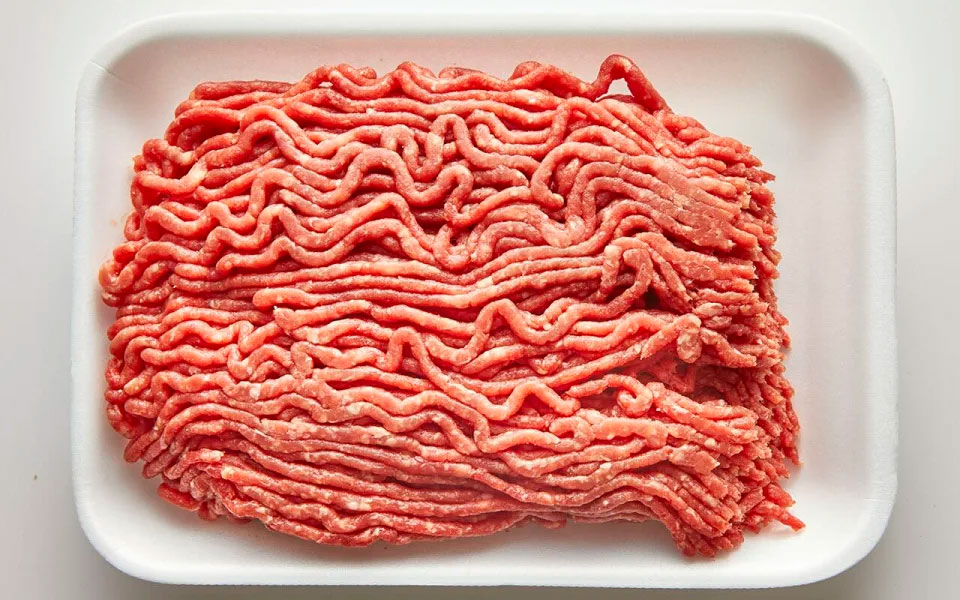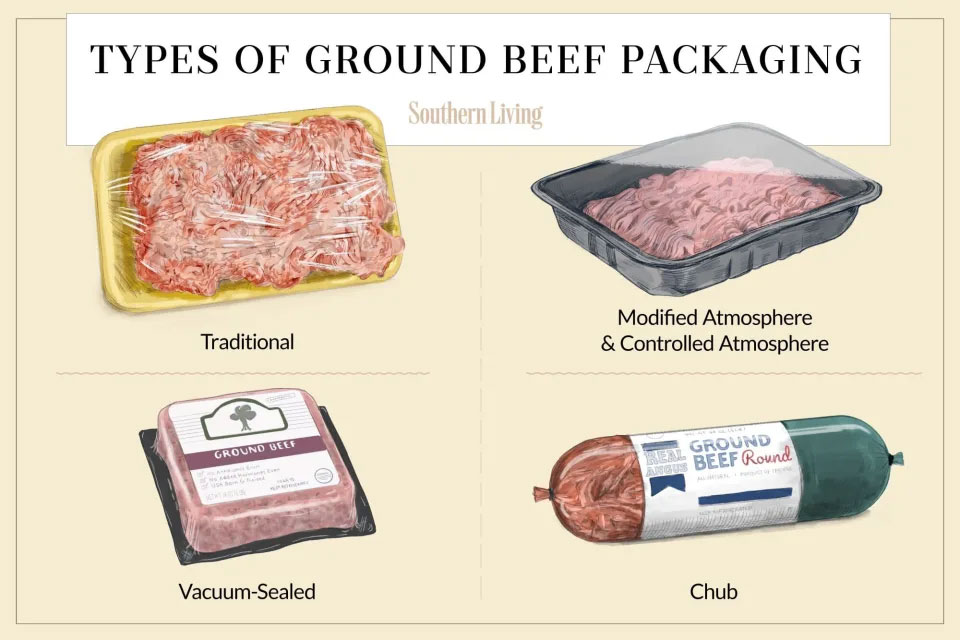 TABLE OF CONTENTS
On This Page
Traditional Packaging
Modified Atmosphere and Controlled Atmosphere Packaging
Vacuum-Sealed Packaging
Chub Packaging
How To Store Packaged Ground Beef
You’ve likely noticed that ground beef is sold in several types of packaging at your local grocer depending on the brand. Does it matter what type of packaging is used for ground beef for safety and preservation? We asked Lisa Robinson, VP of global food safety at public health, Ecolab, who says that the U.S. Food and Drug Administration (FDA) approves all food packaging materials, all of which must be formulated in compliance with the agency’s requirements. She says manufacturers of new packaging materials have to petition the FDA and provide data showing the material is safe to use if it hasn’t already been regulated for its proposed use. That means any type of ground beef packaging you come across has gone through rigorous approval and research to ensure it is safe.
TABLE OF CONTENTS
On This Page
Traditional Packaging
Modified Atmosphere and Controlled Atmosphere Packaging
Vacuum-Sealed Packaging
Chub Packaging
How To Store Packaged Ground Beef
You’ve likely noticed that ground beef is sold in several types of packaging at your local grocer depending on the brand. Does it matter what type of packaging is used for ground beef for safety and preservation? We asked Lisa Robinson, VP of global food safety at public health, Ecolab, who says that the U.S. Food and Drug Administration (FDA) approves all food packaging materials, all of which must be formulated in compliance with the agency’s requirements. She says manufacturers of new packaging materials have to petition the FDA and provide data showing the material is safe to use if it hasn’t already been regulated for its proposed use. That means any type of ground beef packaging you come across has gone through rigorous approval and research to ensure it is safe.
“Meat and poultry products may not be packaged in a container composed of any substances that may adulterate the contents or be injurious to health,” says Robinson. However, not all ground beef packaging is created equal, and depending on your intentions for using the ingredient, you may want to purchase different types for your intended use.
 Traditional Packaging
Robinson says that the most common ground beef packaging you’ll find at supermarkets is in foam insulated trays that are covered in plastic wrap. According to MeatScience.org, this type of packaging is used on approximately two-thirds of ground beef products as it gives the meat an appealing color and is inexpensive to manufacture. However, this type of packaging allows oxygen in, so the product will spoil easily. Make sure that you have a plan to use ground beef in this type of packaging within two days if you don’t plan to freeze it in a sealed bag.
Traditional Packaging
Robinson says that the most common ground beef packaging you’ll find at supermarkets is in foam insulated trays that are covered in plastic wrap. According to MeatScience.org, this type of packaging is used on approximately two-thirds of ground beef products as it gives the meat an appealing color and is inexpensive to manufacture. However, this type of packaging allows oxygen in, so the product will spoil easily. Make sure that you have a plan to use ground beef in this type of packaging within two days if you don’t plan to freeze it in a sealed bag.
Modified Atmosphere and Controlled Atmosphere Packaging An advancement in ground beef and overall food packaging, modified atmosphere packaging (MAP) and controlled atmosphere packaging (CAP) replace at least some, often all, of the air inside a food package with other gasses such as nitrogen, or carbon dioxide, according to the FDA. This further helps to preserve foods better than traditional packaging while still achieving that desired red color you find with the traditional material.
Vacuum-Sealed Packaging The FDA says that exposure to oxygen speeds up the “chemical breakdown and microbial spoilage” in many foods, so scientists have developed better packaging over the years to better preserve foods like meat and poultry. The agency says that vacuum packaging removes air and produces a vacuum inside to help keep ground beef fresher but gives it more of a purple-red color. This is the best type to buy if you are planning to freeze the meat, as it can be frozen as-is.
Chub Packaging Another type of packaging is tube packaging, or chubs. Basically, these are rolls of ground beef sold in a variety of weights that are tied at each end with metal twists and are vacuum-sealed. Tube packaging is also great if you’re looking to freeze ground beef.
How To Store Packaged Ground Beef Robinson advies refrigerating or freezing ground beef as soon as possible after grocery shopping or visiting your local farmers market to preserve freshness and slow bacterial growth. If you plan to use the ground beef within a day or two, it can be stored in its original packaging in the fridge or freezer—make sure your freezer is kept at 40 degrees Fahrenheit or below.
Those seeking to freeze ground beef for more than a few days should wrap the original packaging in heavy-duty plastic wrap, aluminum foil, freezer paper, or plastic bags intended for freezing, says Robinson. However, she notes that while ground beef is plenty safe to freeze, it will lose its quality over time, so be sure to mark a date on the freezer packaging and use the product within four months.
Comments
No comments yet. Be the first to react!